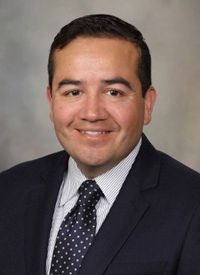Article
Expert Discusses Lymphedema Treatment and Challenges in Breast Cancer
Author(s):
Oscar J. Manrique, MD, discusses the current treatments for patients with lymphedema who have breast cancer and the challenges that remain in this space.
Oscar J. Manrique, MD, associate professor of oncology and urology at Johns Hopkins Medicine

Oscar J. Manrique, MD
Lymphedema remains an incurable adverse event that is sometimes developed by patients with breast cancer who have undergone surgery or received radiation therapy for their malignancy; however, outcomes can be improved if the condition is diagnosed and managed in its early stages, said Oscar J. Manrique, MD.
Currently, the most common approach used to combat lymphedema is to treat patients during axillary lymph node dissection by performing a prophylactic bypass. For this procedure, leaking lymphatics are identified and then connected with veins, explained Manrique, a plastic surgeon at the Mayo Clinic.
However, the challenge is that many of these procedures are palliative. What is needed, Manrique said, is to have more centers have a multidisciplinary approach to patients with lymphedema, as well as improving patient selection for treatment and understanding the cause of the condition.
OncLive: How frequently does lymphedema occur in patients with breast cancer?
What is the current approach for treating these patients?
In an interview during the 2018 OncLive® State of the Science Summit™ on Breast Cancer, Manrique discussed the current treatments for patients with lymphedema who have breast cancer and the challenges that remain in this space.Manrique: [The frequency of this condition] varies [in this patient population]. It definitely depends on different factors, such as radiation, or if the patient requires an axillary lymph node dissection. I would say that in a patient with these risk factors, it occurs about 30% to 40% of the time.Our goal is to intervene early and do what are called physiological procedures. Even now, we are trying to do prophylactic bypasses during axillary lymph node dissection with reverse mapping. We identify the lymphatics that are leaking and try to connect them with a vein. Most of the time, the patients that I see are the ones who already have lymphedema, so most of these procedures are palliative.
How do you determine the best treatment approach for a patient?
What is the biggest challenge?
What is needed to overcome this challenge?
There is still no cure for patients with lymphedema, but hopefully, we can see that in the next several years. One thing we are seeing now, however, is an improvement in outcomes, particularly in quality of life.The key is to intervene early. Our goal is to perform these physiological procedures because they are easier and require microsurgical techniques. These procedures can be challenging, but someone who is trained in microsurgery should be able to perform them. We do not want to let lymphedema elevate to a higher stage because that is when the condition becomes very difficult to treat.It is probably patient selection because that is our key to success. Not every patient who comes to see you with questionable lymphedema [actually] has lymphedema. As I mentioned, the condition it is not curative, but we still want to see a good outcome.A multidisciplinary approach is needed. That is one of the great things about Mayo Clinic; we work in combination with the oncologists, breast surgeons, physical therapists—you name it. When we see our patients, we get involved [in the early stages]. We have algorithms to help us decide which approach to use as soon as possible. We need to be more conscious about this chronic disease. It is something we have known about for a long time, but sometimes people ignore it and don't realize how difficult it makes for patients to live normal, daily lives. These patients deal with pain, infection of their limbs, and worsening of symptoms.
We are working on several studies to address these issues. Mainly, we would like to understand the cause of it because it is something we don't yet know. Patients undergo all these procedures and still sometimes develop lymphedema.








